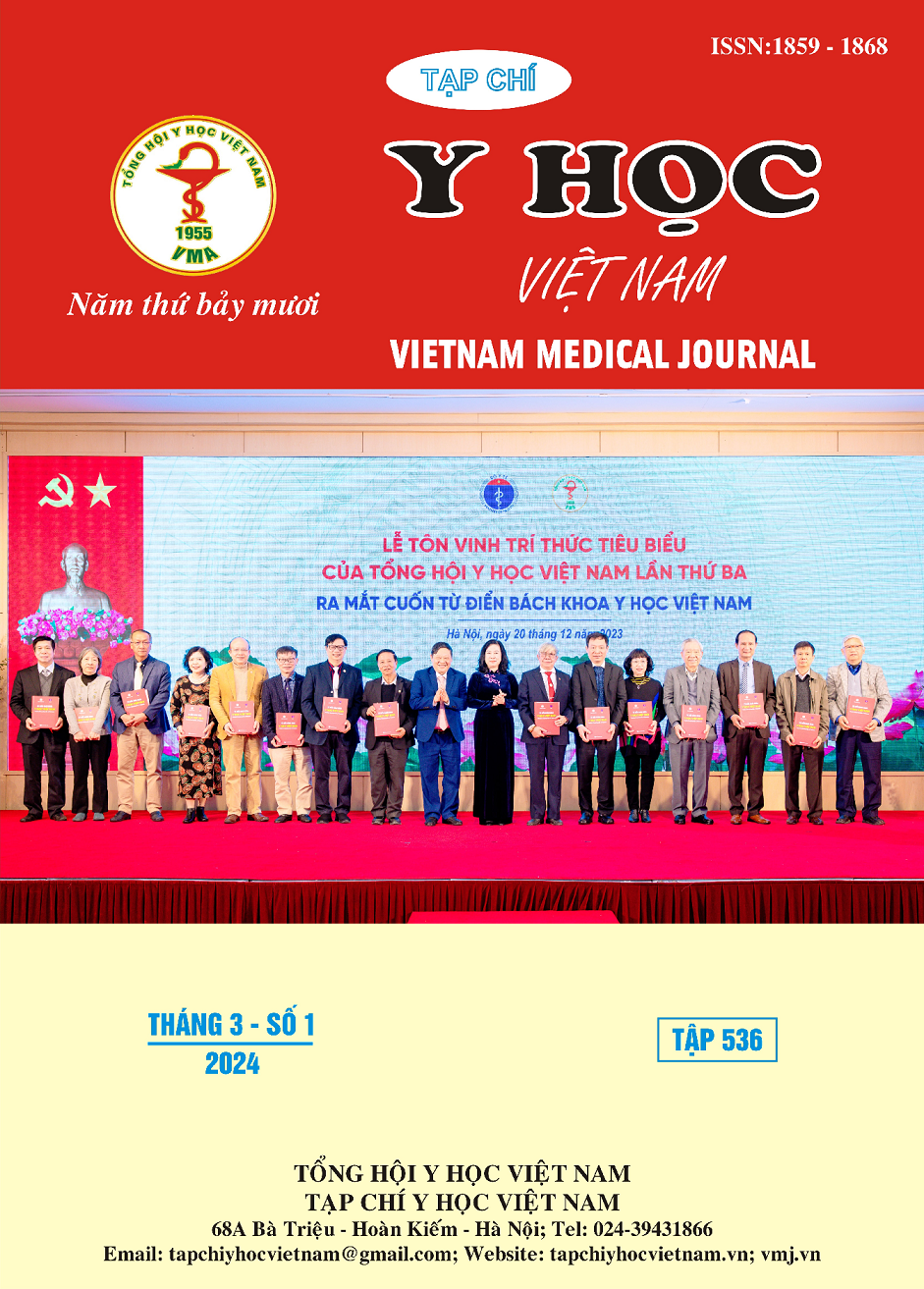EVALUATION OF PAIN REDUCTION EFFECTIVENESS OF COMBINATION OF LIDOCAIN, KETAMIN AND INTRAVENOUS MAGNESIUM SULFATE TO REPLACE OPIOIDS IN GENERAL ANESTHESIA FOR THYROIDECTOMY SURGERY
Main Article Content
Abstract
Objective: Evaluate the analgesic effectiveness and unwanted effects of a combination of lidocaine, ketamine and intravenous magnesium sulfate during and after thyroidectomy surgery. Research subjects and methods: Randomized clinical trial design comparing 64 thyroidectomy patients divided into two groups: Group 1 (OA- Opioid Anesthesia group): anesthesia using intravenous fentanyl, Group 2 (OA group): OFA-Opioid-Free Anesthesia group): anesthesia using intravenous lidocaine, magnesium sulfate and ketamine. During surgery, patients were monitored through ANI (Analgesia Nociception Index). After surgery, patients were monitored for 24 hours, from the time the endotracheal tube was removed and fully awake. Results: The total time of ANI < 50 during surgery was higher in group 1 than in group 2 (15.63 ± 4.86 minutes versus 11.47 ± 5.68 minutes; p < 0.05). The average VAS score in the first hour after surgery when resting, when moving the neck and when coughing in group 1 was significantly higher than in group 2 (3.09 ± 0.8; 3.35 ± 0.89; 3, 51 ± 1.02 vs. 1.85 ± 0.53, 2.79 ± 1.13; 2.19 ± 1.08; p < 0,05), the amount of ketorolac used for rescue within 24 hours after surgery in Group 1 was statistically significantly higher than group 2 (420mg vs 210mg). The rate of postoperative nausea and vomiting in group 1 was statistically significantly higher than that in group 2 (34.47% vs. 9.37%; p < 0.05). The proportion of patients with postoperative irritation in group 1 and group 2 is 31.25% and 12.5%, respectively, the difference is statistically significant (p < 0,05). Conclusion: Combining lidocaine, ketamine and magnesium sulfate provides better pain relief both during and after surgery, and the unwanted side effects are also lower than anesthesia using opioids alone.
Article Details
References
2. Ledowski T., Averhoff L., Tiong W.S., et al. (2014). Analgesia Nociception Index (ANI) to predict intraoperative haemodynamic changes: results of a pilot investigation. Acta Anaesthesiol Scand, 58(1), 74–79.
3. Khaled D., Mohamed O., Alaa I., et al. (2023). Opioid Free Anesthesia versus Opioid Based Anesthesia for Hemodynamic Stability in Geriatric Patients Undergoing Arthroscopic Shoulder Surgery, A Randomized Comparative Study. Egypt J Anaesth, 39(1), 626–634.
4. Paul Mulier J. (2016), Opioid free (OFA) versus opioid (OA) and low opioid anesthesia (LOA) for the laparoscopic gastric bypass surgery. Immediate post operative morbidity and mortality in a single center study on 5061 consecutive patients from March 2011 till June 2015, other.
5. Javier M.-E.K. Opioid-Free Anesthesia.
6. Mansour M.A., Mahmoud A.A.A., and Geddawy M. (2013). Nonopioid versus opioid based general anesthesia technique for bariatric surgery: A randomized double-blind study. Saudi J Anaesth, 7(4), 387–391.


